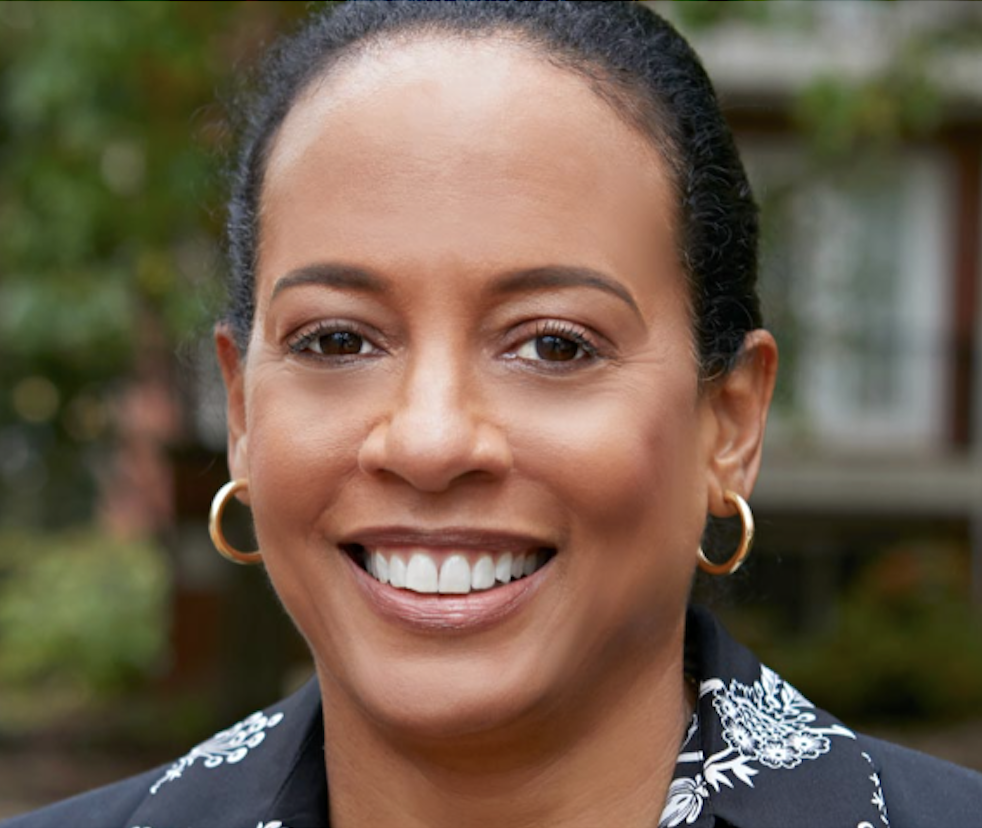
Getty Images
It is well established that there are racial disparities in healthcare that can have devastating implications for patient outcomes, and this has been shown to be particularly true for Black patients. In fact, it is the unfortunate reality that Black Americans have the highest mortality rate for all cancers combined as compared with any other racial and ethnic group.1 Physicians are entrusted with caring for the health of all patients, so it is essential that we better understand how systemic racial biases impact our health system and subsequently fail to support our Black patients. There is an urgent need to identify these shortcomings so that we can solve them.
Study Reveals Disparities in DBT
A new study set out to learn more about breast health for Black women and to establish a better understanding of the breast screening landscape by analyzing mammograms, screening intervals and interpretation performance for Asian, Black and white women across health systems throughout the United States, with participation from Advocate Health Care, Sanford Health and the University of Pennsylvania Health System. The resulting study, “Outcomes by Race in Breast Cancer Screening with Digital Breast Tomosynthesis versus Digital Mammography,” was published in the Journal of the American College of Radiology (JACR) and is part of a comprehensive, real-world evidence-based study commissioned by Hologic. It reported on breast cancer screening access, utilization and outcomes by race for 385,504 Asian, Black and white women who underwent a total of 804,304 screening exams at 63 breast imaging facilities in the United States from January 2015 through January 2019.
Despite the fact that digital breast tomosynthesis (DBT) is widely considered the standard of care for annual breast cancer screening, the study revealed that Black women were less likely to be screened via DBT and also less likely to be screened multiple times during the five-year period than white women. This is alarming, because we have known that DBT is a superior breast screening method compared to 2-D mammography for a long time and hundreds of studies have verified this.
In fact, this very study added to the body of evidence supporting the efficacy of DBT exams, finding that screening via DBT improved both recall rates and cancer detection for women of all races. The reality is that DBT exams have been clinically proven to detect 20 to 65 percent more invasive breast cancers compared to 2-D mammography alone.2 Furthermore, DBT exams have been FDA approved as superior to conventional mammography for women with dense breasts,3, 4 which has been shown to put women at greater risk of getting breast cancer in the first place.
The study findings clearly suggest that disparities in DBT utilization are an urgent issue that will require a concerted effort to improve the effectiveness of breast cancer screening. The implications are particularly concerning for Black women, given that the breast cancer death rate is 40 percent higher in Black women versus white women,5 despite the fact that the incidence of breast cancer is about the same for Black and white women.6
The Need for Equitable Access
So, why aren’t Black women being screened with DBT? Partially because providers are not offering the technology to their Black patients. This needs to change, and we need to better understand why providers do not recommend DBT to Black women as often when available. Ideally, every single woman being screened for breast cancer would receive a DBT exam as the standard of care.
This disparity also stems from lack of access, given that while the screening rate for Black and white women is comparable, Black women are more likely to be screened at lower resourced facilities and also experience longer intervals between detection, diagnosis and treatment.7 And these disparities may be amplified by variances in adoption and dissemination for new technologies.8 It has been shown that adoption rates of DBT are accelerated in areas with a higher median income and larger populations of white residents,9 thus disproportionately denying Black women access to this proven, superior screening modality. Without equitable access to DBT technology, disparities in breast cancer screening for Black women will continue.
In addition, screening guidelines have a role to play in contributing to breast cancer disparities. For instance, the United States Preventive Services Task Force (USPSTF) guidelines recommend bi-annual breast cancer screening starting at age 50; however, their guidelines are inherently flawed, because they are based on research that does not include a meaningful population of women of color — in addition to using outdated screening technology, as they do not include DBT. This is particularly problematic for Black women. Not only are they getting the disease at a younger age, but they are diagnosed at a much later stage than women of other races.10 On top of this, Black women are also more likely to have the less common, triple-negative breast cancer, which we know is aggressive and often more difficult to treat successfully.11
Current screening guidelines need to reflect these insights to ensure they are representative of the diverse population that we serve, and that they factor in the unique epidemiological factors Black women must face, including the fact that Black women are diagnosed with breast cancer 5-7 years younger than white women and that more than 20 percent of breast cancers in Black women occur under the age of 50.10 In addition, these guidelines should also take into account the proven benefits of screening with DBT, particularly with regards to invasive cancer detection rates and reduced recalls. Thankfully, there appears to be some positive recent progress on this front, as the USPSTF has outlined a research plan to update its current breast cancer screening recommendation, which was released in 2016. The final research plan, which was unveiled in May 2021, includes considerations for examining the comparative effectiveness of different mammography screening strategies, in addition to exploring the effect that racism, social inequities and unequal access to healthcare may impact breast cancer incidence and outcomes.
Also, differences in health insurance coverage can contribute to these screening disparities. People of color have been shown to be more likely than their white counterparts to be uninsured,12 and insurance coverage of DBT was incomplete in the JACR study. In addition, DBT screening required additional out-of-pocket payments in many cases. In some cases, doctors may not recommend DBT based on a patient’s insurer or if it is perceived that the patient is unable to pay for the exam. Solving for disparities in insurance coverage will require updated governmental and state policies and guidelines.
Collaborate on Strategies for Improvement
These facts, coupled with the study data, indicate there is a clear need for improved access to DBT and additional education to emphasize the importance of regular screening. The onus is on all of us to address these challenges head-on and to collaborate on strategies that consider every angle of the issue. Some great examples of how the breast industry can tackle common barriers are Hologic’s partnerships with Black Women’s Health Imperative and RAD-AID. Through Hologic’s multi-pronged initiative, the company is taking steps to examine common barriers to breast screening and encourage Black women to get annual mammograms beginning at age 40. And, for those women in underserved communities, Hologic and partners are providing access to superior breast cancer screening technology, nurse navigation services, therapeutic care and more.
When considering the racial differences in the study, it is clear that many of the outcomes are rooted in social, economic, cultural and educational inequities. Without equitable access to DBT, there will continue to be disproportionately poorer health outcomes for Black women. This research underscores the importance of the changes we must make to improve access and better educate women so as to increase screening rates, particularly with DBT, which has proven time and time again to improve both recall rates and cancer detection for women of all races. We must continue to research racial disparities in the delivery of healthcare, including in the breast screening industry, with the hope that these learnings will lead to positive change in early detection, mortality rates and guideline clarifications that benefit all women.

Linda Goler Blount, MPH, is president and CEO of Black Women’s Health Imperative. As president and CEO, she oversees the strategic direction for the Imperative and is responsible for moving the organization forward in its mission to achieve health equity, as well as reproductive justice for Black women.
References:
1. U.S. Department of Health and Human Services Office of Minority Health, “Cancer and African Americans.”
2. Results from Friedewald, SM, et al. “Breast cancer screening using tomosynthesis in combination with digital mammography.” JAMA 311.24 (2014): 2499-2507; a multi-site (13), non-randomized, historical control study of 454,000 screening mammograms investigating the initial impact the introduction of the Hologic Selenia Dimensions on screening outcomes. Individual results may vary. The study found an average 41% increase and that 1.2 (95% CI: 0.8-1.6) additional invasive breast cancers per 1,000 screening exams were found in women receiving combined 2D FFDM and 3D mammograms acquired with the Hologic 3D Mammography System versus women receiving 2D FFDM mammograms only.
3. Bernardi D, Macaskill P, Pellegrini M, et. al. Breast cancer screening with tomosynthesis (3D mammography) with acquired or synthetic 2D mammography compared with 2D mammography alone (STORM-2): a population-based prospective study. Lancet Oncol. 2016 Aug;17(8):1105-13.
4. FDA submissions P080003, P080003/S001, P080003/S004, P080003/S005.
5. American Cancer Society Breast Cancer Facts & Figures 2019-2020
6. https://www.cdc.gov/cancer/dcpc/research/articles/breast_cancer_rates_women.htm. Accessed May 20, 2021.
7. American Cancer Society Breast Cancer Facts & Figures 2019-2020
8. Miles RC, Onega T, Lee CI. Addressing potential health disparities in the adoption of advanced breast imaging technologies. Acad Radiol 25:547-551.
9. Richman I.B., Hoag J.R., Xu X., et al. Adoption of digital breast tomosynthesis in clinical practice. JAMA Intern Med. 2019; 179: 1292-1295
10. Passmore, S. R., Williams-Parry, K. F., Casper, E., & Thomas, S. B. (2017). Message received: African American women and breast cancer screening. Health promotion practice, 18(5), 726-733.
11. www.cancer.org/cancer/breast-cancer/risk-and-prevention/breast-cancer-risk-factors-you-cannot-change.html. Accessed May 20, 2021.
12. www.kff.org/uninsured/issue-brief/key-facts-about-the-uninsured-population/. Accessed May 20, 2021.
Related breast cancer information:
Black and White Women Have Same Mutations Linked to Breast Cancer Risk
Hologic Launches $20M Initiative to Tackle Racial Disparities in Healthcare
Insurance Isn't Enough for Women at High Risk of Breast Cancer


 December 17, 2025
December 17, 2025 









